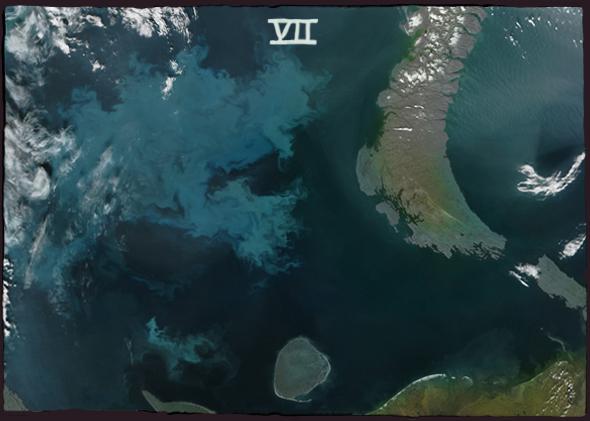Every year, the editors of the Futurist magazine identify the most provocative forecasts and statements about the future that we’ve published recently and we put them to into an annual report called “Outlook.” It’s sprawling exploration of what the future looks like at a particular moment in time. To accompany the report, we draft a list of our top 10 favorite predictions from the magazine’s previous 12 months. What are the criteria to be admitted into the top 10? The forecast should be interesting, relatively high impact, and rising in likelihood.
In other words, it’s a bit subjective.
There are surely better methods for evaluating statements about the future, but not for our purposes. You see, we aren’t actually interested in attempting to tell our readers what will happen so much as provoking a better discussion about what can happen—and what futures can be avoided, if we discover we’re heading in an unsavory direction.
The future isn’t a destination. But the problem with too many conversations about the future, especially those involving futurists, is that predictions tend to take on unmitigated certainty, sounding like GPS directions. When you reach the Singularity, turn left—that sort of thing. In reality, it’s more like wandering around a city, deciding spur of the moment what road to take.
In that spirit, we offer these 10 forecasts to you. With each, I’ve attempted to explain our reasoning for its inclusion and present a countertrend that could derail the forecast’s realization. The future is more interesting when it’s treated precisely as what it is: a set of potentialities and probabilities.
Without further ado, here are the Futurist’s top 10 forecasts for 2014 and beyond.
1. Thanks to big data, the environment around you will anticipate your every move.
The forecast: “Computerized sensing and broadcasting abilities are being incorporated into our physical environment, creating what is sometimes called an ‘Internet of things.’ Data flowing from sensor networks, RFID tags, surveillance cameras, unmanned aerial vehicles, and geo-tagged social-media posts will telegraph where we’ve been and where we are going. In the future, these data streams will be integrated into services, platforms, and programs that will provide a window into the lives, and futures, of billions of people.”
From “Mapping the Future with Big Data,” July–August 2013.
Why it’s in the top 10: The threshold factor. The world reached a significant but unremarked upon turning point between 2008 and 2009 when the number of devices—sensors, phones, computers—connected to the Internet outnumbered the human population. By 2020, when an estimated 7.6 billion people will be running around on the planet, there will be 50 billion machines communicating to one another … about us. As a population, we generate 1.8 million megabytes of data on a yearly basis related to what we listen to and stream, where we are, where we’re going, what we buy, and how we feel about it.
Data brokerage companies like Acxiom send that information to marketers and companies looking to pitch products to you. Services like Google Now and Osito can deliver you traffic and scheduling recommendations based on an understanding of data you give them. Companies like California’s Esri combine all that information into geographical information services and capabilities to show how all of these people and objects are interacting in our physical world. In the decades ahead these different data streams will combine, forming a much more anticipatory environment.

Photo illustration by Lisa Larson-Walker. Photos by Getty Images (2).
Why it may not happen: Potential privacy backlash. When your environment gathers information about you, it has to share that information. People are beginning to ask a lot of questions about that. In a recent Pew poll, 68 percent of respondents said that they believed current laws related to Internet use don’t adequately protect consumers’ privacy.
The entire vision of the Internet of Things is evolving as quickly as it’s forming. In a recent speech at the World Future Society conference in July, One Laptop Per Child founder Nicholas Negroponte pointed out that the vision of the Internet of Things that he long nurtured at the MIT Media Lab, one where objects in our surroundings react to us with intelligence, has “almost gone by the wayside.” What’s replacing it is an app-based ecosystem that allows for the remote control of everything from iPhones and Androids.
We can either turn our world into a sensing, intelligent, living space, or into one big extension of a device not everyone owns, says Negroponte.
2. We will revive recently extinct species.
The forecast: The passenger pigeon, for example, may be brought back after 100 years. In our September–October issue, geneticist Ben Novak describes a strategy for “de-extincting” the passenger pigeon, which died out in 1914.
The project, dubbed the Great Comeback, involves five research phases:
- Sequencing and analyzing pigeon genomes to understand passenger pigeon biology.
- Producing cells that could be used to engineer a living passenger pigeon.
- Creating the genome from synthesized passenger pigeon DNA.
- Using altered cells to create breeding chimeras (combinations of rock and passenger pigeons) that would ultimately create pure passenger pigeons.
- Reintroducing new passenger pigeons back into the wild.
From “The Great Comeback: Bringing a Species Back from Extinction” by Ben J. Novak, September–October 2013.

Photo illustration by Lisa Larson-Walker. Photo courtesy Wikimedia Commons (http://commons.wikimedia.org/wiki/File:Passenger_pigeon.jpg)
Why it’s in the top 10: The last-great-hope factor. If current rates of species loss continue, we will see a mass extinction event within a few hundred years, according to Anthony D. Barnosky, a UC–Berkeley biologist, and his colleagues, writing in the journal Nature. In this sixth great die-off, more than 75 percent of the Earth’s biota could vanish. But the loss of just a few critical species, such as pollinating birds and insects and organisms that keep watersheds safe, could be extremely disruptive to humans and come much sooner (see item No. 7). De-extinction might be a do-over button.
In his recent piece for National Geographic Carl Zimmer tackles the Michael Crichton-esque hype surrounding de-extinction science. Dinosaur DNA is just too old to reanimate the T-Rex. A mammoth is a better contender but still poses enormous challenges. The best candidates for de-extinction, for reasons technical, ethical, and practical, are species that vanished recently at the hand of humankind—like the American passenger pigeon.
Why it may not happen: As Novak writes in his essay: “Of my nearly 500 million DNA sequences, about 50% of it is bacteria. A small fraction is human. And a small fraction is unknown in origin—a problem we won’t solve until we manage to sequence the DNA of every life-form on Earth.” This is a big-data problem, and there is a big-data labor shortage. Not many people know how this stuff works, and the ones who do have more lucrative work to do than playing Dr. Frankenstein with birds.
Furthermore, conservationists have very mixed views on the subject of de-extinction. As Frank Swain wrote in Slate, “to focus on de-extinction as a conservation strategy communicates the idea that species loss defines environmental degradation, rather than exists as a symptom of it.”
3. By 2020 populations will shrink, and wealth will shrink with them.
The forecast: “By 2020, half of the human race will live in countries where the birthrates have fallen below the death rates, and consequently, populations are shrinking. The cause is the combination of older adults living longer and fewer children being born. The countries will grapple with shrinking tax bases and workforces despite widening pools of retirees demanding social-security and health-care payouts. Society will survive, but GDPs will fall markedly throughout the world and probably never fully rise back up.”
From “In Search of the ‘Better Angels’ of Our Future” by Kenneth Taylor, November–December 2012.
Why it’s in the top 10: The big narrative on population has changed relatively little since the publication of Limits to Growth in 1972. The story goes like this: Global population rise is unsustainable and will lead to a calamity of resource exhaustion before the end the century. The most recent United Nations forecast has the human population reaching 9.6 billion people by 2050. If these people consume resources the way Americans do today, it will certainly be beyond the Earth’s natural carrying capacity.
The question that seems never to come up when discussing population forecasts is: Why does population grow in some places and decline in others?
Here’s a very simple answer: As the West moved from an agrarian economy to an industrial one and finally to a system based on knowledge work, children have gone from being an economic asset to … something else. Wired’s Kevin Kelly has described the transition this way: “[T]he more technologically developed a society becomes, the fewer offspring couples will have, the easier it is for them to raise their living standards, the more that progress lowers their desire for large families. The result is the spiral of modern technological population decline—a new but now universal pattern.”
The technologically advanced nation of Japan is, in many ways, the embodiment of this trend. It has one of the lowest fertility rates in the world (1.39) and is also the second oldest nation on earth, demographically speaking, with more than one out of five people over the age of 65.
Population projections such as the U.N.’s 9.6 billion figure are the bread and butter of futurism because they’re stable and slow moving. (Futurists hate updating their PowerPoints.) But the future isn’t fixed, even for the United Nations. To arrive at a different conclusion, just imagine the same social and economic pressures that are present in Japan spreading to Africa as quickly as the spread of technology, because the two are linked. (Jeff Wise has also made the case for a declining population in Slate.)
Why it may not happen: After you are done imaging Africa becoming like Japan, wrap your head around the current projections. About 42 percent of Africa and 48 percent of sub-Saharan Africa still will not have access to electricity in 2030, according to the International Energy Agency. That fact bodes poorly for the rapid spread of information technology in the region. But Taylor’s forecast for the developed world still applies.
4. Doctors will see brain diseases many years before they arise.
The forecast: “Brain scans can warn doctors if a patient will suffer Alzheimer’s, dementia, Lou Gehrig’s, or a number of other brain disorders as many as 10–15 years ahead of physical symptoms. Researchers at the Washington University School of Medicine in St. Louis are learning to identify distinct chemical biomarkers within patients’ body and brain functions. Doctors could then slow the progression of the diseases if they start administering treatments years earlier.”
From “The Brain as Health Forecaster,” by Rick Docksai, January–February 2013.

Photo illustration by Lisa Larson-Walker. Photo by Shutterstock.
Why it’s in the top 10: The this-affects-your-dad factor. Figures suggest that in 2050, half the U.S. population aged 85 and older will have Alzheimer’s disease. That’s an estimated 13 million people, unless you believe forecast No. 3. It’s one of the clear consequences of a longer-living population. Steps we can take today to manage Alzheimer’s could have huge benefits for what will be an incredibly strained health care system. “We’re currently trying to treat the disease in the last few years of the disease, and that’s probably not the best therapeutic strategy,” one of the study’s lead researchers, Randall Bateman, told the Futurist.
Why it may disappoint: Detecting Alzheimer’s decades earlier is very different from curing it. While some experimental treatments have proven effective in slowing the progression of the disease, actually getting rid of it still seems far away.
5. Buying and owning things will go out of style.
The forecast: “The markets for housing, automobiles, music, books, and many other products show a common trend: Younger consumers opting to rent or subscribe to pay-per-use arrangements instead of buying and owning the physical products. Shared facilities will overtake established offices, renting units will become more common than owning a home, and sales of books and music might never become popular again.” From “Consumption 2.0,” by Hugo Garcia, January–February, 2013.
Why it’s in the top 10: The megatrends factor. This is the story of two major phenomena colliding: an abundance of underemployed young people leveraging technology to create a new sharing economy.
One of the key consequences of the 2008 recession is that nearly half of recent college graduates in the United States are unemployed or underemployed. Those who went to college have better prospects than their peers but are carrying around record amounts of debt—an average of $27,000 per grad. Variations of this story are playing out in Europe, where student debt is lower but unemployment among young people is higher. For instance, in Spain nearly half of the population under the age of 25 have no jobs at all. We are creating a generation of young people with less disposal income than their parents had. Yes, there are lines around the corner to buy a new Apple iPhone, but millennials aren’t lining up to buy houses.
This high unemployment is being met by a second trend: social startups that make sharing a lot easier. Consider Getaround, an app-based car share service that allows anyone to rent out her car. You select the renter and send your customer a code to unlock your car and turn on the engine. When the contract expires, the code no longer works.
Why it might not happen: The economy is supposed to be recovering, which could lead to more disposable income for young people and the end of the sharing fad. But economists predict unemployment to stay above 6.5 percent through 2015, and young peoples’ lower earnings today may still show the effects of underemployment well past the time when we call them “young people.”
6. Quantum computing could lead the way to true artificial intelligence.
The forecast: “Conventional computers cannot make decisions, as humans do, but quantum computers eventually might, says Geordie Rose, creator of the D-Wave One quantum computer. They use programs based on quantum mechanics to see multiple possible outcomes to any given problem and combine information from each to formulate solutions. With another 10 to 15 years of enhancement, they might cross the threshold to true machine consciousness, Rose predicts.”
From “Dream, Design, Develop, Deliver: From Great Ideas to Better Outcomes.” November–December, 2012

Photo illustration by Lisa Larson-Walker. Photo by Hulton/Getty Images
Why it’s in the top 10: The breakthrough factor. We don’t know the full applications of quantum computing aside from some very clear ones in encryption. Consider, however, that the D-Wave One consumes much less energy than a server farm but can do just as much work. In the spring of 2013, independent analysis revealed from researchers at Amherst and Simon Fraser found that the D-Wave system was 3,600 times as fast as a conventional system. Check out Quentin Hardy’s piece on the New York Times’ site for more. It’s possible that quantum computing could remake the entire field of computer science and move us past silicon-based transistors, which will reach an innovation endpoint by 2022, according to Robert Cowell, who has been both Intel’s chief architect and the director of DARPA.
Why it might not happen: Side-by-side performance measurements are one thing, but we don’t know what questions to ask about quantum computing to assess what’s really going on. For instance, with conventional bits, numbers and values are represented in a clear binary form. The qubits (or quantum bits of information that make up quantum computation) can represent ones, zeros, or both at once. Understanding how qubits are interacting with one another, with information, and with the universe is a far murkier business. And D-Wave has its detractors.
7. Phytoplankton death will further disrupt aquatic ecosystems.
The forecast: “The tiny marine plants are sensitive to temperature changes, so global warming poses a major threat to their populations. A University of Michigan study projects that up to 40% of the world’s phytoplankton will die out by this century’s end.”
—From “Climate Disruption and Plankton Destruction” by Rick Docksai, March–April, 2013

Photo illustration by Lisa Larson-Walker. Photo courtesy NASA.
Why it’s in top 10: The you-didn’t-know-this-mattered-but-it-does factor. Phytoplankton are like the rain forests of the sea, converting carbon dioxide to oxygen on a massive scale. So their decline, as a result of global warming, will further exacerbate … global warming.
Oceans have already absorbed 23 percent of the carbon dioxide that our species has produced, which is part of the reason we have yet to really feel the impacts of climate change. But we can’t keep using the oceans as a carbon dump, because as they get warmer, their capacity to carry carbon goes down.
Why it might not happen: Oceans are an extremely dynamic system, and we don’t know the sum total of the effects we’re having on them. Not long after we published this forecast, NASA satellites discovered huge areas of phytoplankton in the Southern Ocean near Antarctica. Make no mistake, phytoplankton are still important and are still extremely sensitive to temperature changes. But we have a bit more of the stuff than we thought.
8. The future of science is in the hands of crowdsourcing amateurs.
The forecast: “So-called ‘citizen science,’ which uses networks of volunteers in scientific research, is on its way to becoming the favored twenty-first-century model for conducting large-scale scientific research.”
From “The Rise of Citizen Science” by Kathleen Toerpe, July–August, 2013
Why it’s in top 10: The people-power factor. The American Gut Project, the Cornell University Ornithology Lab, the United States Rocket Academy, the U.S. Navy, and NASA are just a few of the outfits and agencies that are using citizen science to reach new findings at low cost, which could accelerate scientific discovery.
What could go wrong: In one instance where citizen scientists were compared with expert systems, the amateurs underperformed—but not by much. In a contest to determine who could better identify land cover on Google map images of 53,000 locations, experts were accurate 69 percent of the time, while citizen scientists got it right compared to 62 percent of the time. You can read the paper here.
Science has become more cross-disciplinary, but individual fields are, today, much more specialized than they were back when Charles Darwin used his understanding of botany, psychology, and a wide host of other fields to reach novel insights about evolution. As disciplines become increasingly complex and require ever more specific knowledge, citizen scientists will be contributing mostly labor to the fight—but not necessarily insight. You can call yourself a scientist and spend your weekend tagging chromosome data, but someone else’s name will go on the final paper. Also, absent some hands on instruction in research methods, citizen scientists can introduce bias into the results.
9. Fusion-fueled rockets could significantly reduce the potential time and cost of sending humans to Mars.
The forecast: “Space exploration is limited to how much fuel our vehicles can bring with them and fuel weighs too much to get us very far. That may soon change. A University of Washington team has devised a type of plasma encased in its own magnetic field. The magnetic field causes metal rings around the plasma to implode and converge to create a shell that ignites the fusion reaction.”
From “Rocketing to Mars with Fusion Power” by Cynthia G. Wagner, July–August, 2013
Why it’s in the top 10: Cool pop-sci factor. A trip to Mars and back would take 500 days, at least. University of Washington aeronautics researcher John Slough says that with a fusion propulsion system, travel time shrinks to something like 30–90 days. The magnetic field would protect the passengers inside the rocket from the large amounts of radiation unleashed in the explosion, according to Slough.

Photo illustration by Lisa Larson-Walker. Photo courtesy NASA.
Why it might not happen: Fusion is a great topic for magazine writing. But if you’re willing to throw money at it, might I interest you in a bridge as well? Charles Seife has done a wonderful job documenting reasons to be skeptical of fusion breakthroughs. Though this meets the criteria of being interesting, important, and more realistic than it was a few years ago, that doesn’t mean the same thing as being truly realistic. Other researchers working along similar lines have forecast 2020 as the earliest date we may be able to use magnetism to shield us from high doses of space radiation. So managed expectations are in order. As Rutherford Lab researcher Ruth Bramformd told Physicsworld a few years ago, “Getting in a tin can with a rocket on your back and flying to Mars is never going to be a safe thing to do.”
10. Atomically precise manufacturing will make machinery, infrastructure, and other systems more productive and less expensive.
The forecast: Atom-by-atom production of everything from solar panels to computers will allow for extraordinary improvements in manufacturing all things.
From “A Radical Future for Nanotechnology” by K. Eric Drexler, September–October 2013
Why it’s in the top 10: The quiet-revolution factor. K. Eric Drexler first came up with the concept of nanotechnology in this paper. But the real benefits of what he has renamed “atomically precise manufacturing” will be both far less conspicuous and much more pervasive than the nanotech hype that we all endured in the 1990s and 2000s. Imagine a future where every product, and every part in it, is made of cheaper, lighter, stronger, more durable, and conductive material than what we’ve got today. As a result, machines become safer and more efficient, emissions go down, computer performance improve and the machine uses less power. The way we make, sell, and buy changes as global supply chains collapse. Before long, garage entrepreneurs with 3-D printers are bringing world-class electronics to market, at scale, and overnight.

Photo illustration by Lisa Larson-Walker. Photo by Joe Raedle/Getty Images.
This is one of the reasons why McKinsey & Co. has forecast atomically precise manufacturing as a one of the most disruptive technologies of the next decade.
Why it might not happen: History repeats itself. No area of inquiry and research lends itself to hype, overpromise, and overreach and in quite the same way as does nanotechnology. As Drexler tells it, the early 1990s were a time when labeling your research “nanotech” almost guaranteed you funding, even if you had no idea what it was. “The concept had become closely linked with promises and dangers that seemed (and often actually were) absurd, and atomically precise fabrication machines— which were all seen as the same—had morphed into imaginary swarms of tiny, threatening, atom-juggling robots.”
Yes, we could absolutely fall for that again.
So there you have it, a quick tour of the future from the banks of the present. If we’ve accomplished anything with this exercise, hopefully we’ve relieved some of you of the notion that the editors of the Futurist claim to know what the future will be. The most we can hope for is to ask better questions of ourselves, of one another, and of technology.
Futurist magazine editors Cynthia Wagner, Rick Docksai, and Keturah Hetrick contributed to this piece.
More from Slate’s series on the future of exploration: Could caves hide a medical miracle? Is the ocean the real final frontier, or is manned sea exploration dead? Why are the best meteorites found in Antarctica? Can humans reproduce on interstellar journeys? Why are we still looking for Atlantis? Why do we celebrate the discovery of new species but keep destroying their homes? Who will win the race to claim the melting Arctic—conservationists or profiteers? Why don’t travelers ditch Yelp and Google in favor of wandering? What can exploring Google’s Ngram Viewer teach us about history? Why did some of America’s best scientific minds gather in 1961 to discuss extraterrestrial life?
